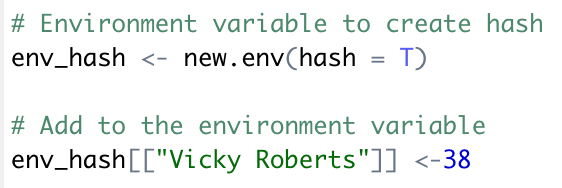Creating Hashes in R with the Hash Package
Published:
R does not provide a native hash table structure, which is unfortunate because if you need a fast and efficient way to retrieve information without worrying about element order, the hash table is a decent data structure choice. R users are not without options, though. The first option involves using an environment variable. 
